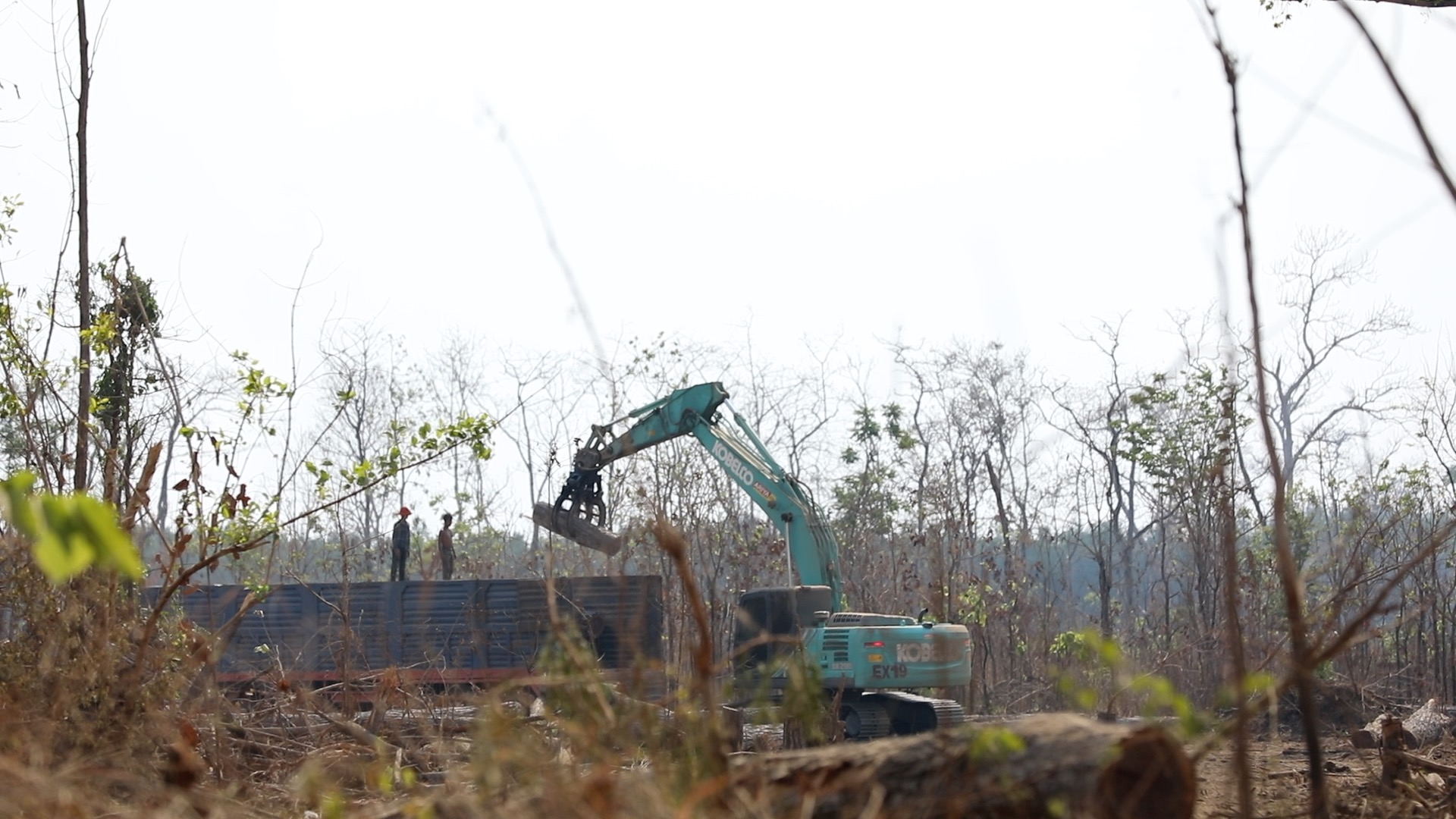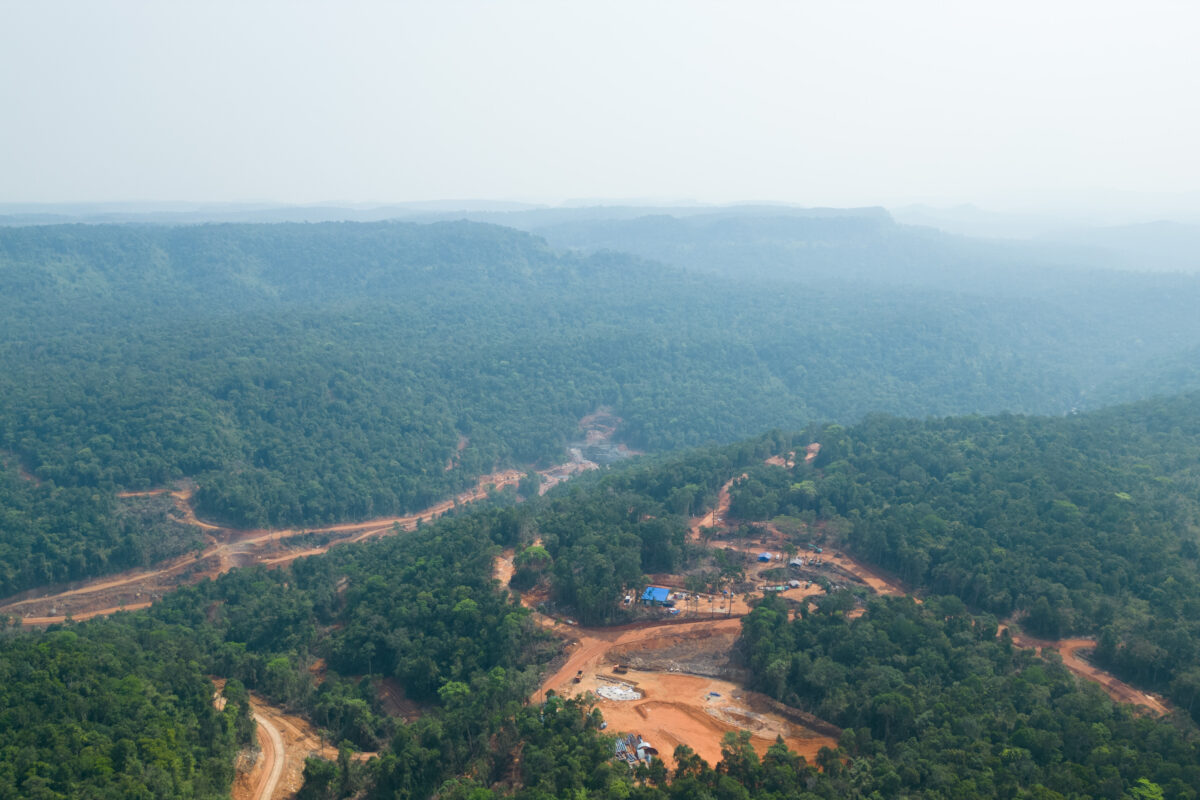- In 2023, Cambodia lost forest cover the size of the city of Los Angeles, or 121,000 hectares (300,000 acres), according to new data published by the University of Maryland.
- The majority of this loss occurred inside protected areas, with the beleaguered Prey Lang Wildlife Sanctuary recording the highest rate of forest loss in what was one of its worst years on record.
- A leading conservation activist says illegal logging inside protected areas is driven in part by demand for luxury timber exports, “but the authorities don’t seem to care about protecting these forests.”
- Despite the worrying trend highlighted by the data, the Cambodian government has set an ambitious target of increasing the country’s forest cover to 60% by 2050.
PHNOM PENH — New data published by the University of Maryland on April 4 and available through satellite monitoring platform Global Forest Watch show continued forest loss across Cambodia last year, particularly in areas designated as protected by the Ministry of Environment.
Last year saw 121,000 hectares (300,000 acres) of forest cover, an area the size of the city of Los Angeles, lost across Cambodia. More than 48,000 hectares (119,000 acres) of this was recorded as primary forest, according to Global Forest Watch.
An analysis conducted by Mongabay using the University of Maryland GLAD lab’s data found the majority of forest loss in Cambodia last year occurred inside protected areas. Assessing the loss of forest canopy with a density of 30% or higher, Mongabay found that more than 66,000 hectares (163,000 acres) of forest vanished from Cambodia’s protected areas in 2023.
However, the figures are difficult to compare to previous years, following sweeping changes to Cambodia’s protected area system that saw more than 1 million additional hectares (2.5 million acres) reclassified as protected between July and August 2023.

Ministry of Environment spokesperson Khvay Atitya didn’t answer specific questions sent by Mongabay via messaging app Telegram, instead stating that Cambodia has 73 protected areas that span 7.2 million hectares (17.8 million acres) — roughly 41% of Cambodia’s landmass — and then detailed the ministry’s new management plan.
Atitya also declined to comment on the ministry’s recent decision to stop sharing maps of protected area boundaries and other state landscapes with “institutions or individuals,” reportedly out of fear of these maps being used for unspecified illegal purposes and to “enhance natural resource protection.”
Maps for almost all the updated boundaries of Cambodia’s protected areas were shared publicly through July and August last year by multiple government sources, including now-Prime Minister Hun Manet and then-environment minister Say Samal.
Using these maps, it was possible to calculate that of all the protected areas in Cambodia, Prey Lang Wildlife Sanctuary recorded the highest rate of forest loss, with almost 11,500 hectares (28,400 acres) of the sanctuary lost. This represents one of the worst years on record for Prey Lang — although the protected forest did expand by almost 60,000 hectares (148,000 acres) last year.

The expansion of a Chinese-managed gold mine and the opening of an iron ore mine owned by notorious timber trader Try Pheap both contributed significantly to the deforestation seen in Prey Lang last year. Illegal logging tied to Think Biotech and its sister company Angkor Plywood also played a large role.
With 7,232 hectares (17,871 acres) of forest lost, Beng Per Wildlife Sanctuary was the second worst-affected protected area last year. Politically connected interests have been ransacking the forest for years, and 2023 was no exception. A former protégé of Try Pheap, Ouk Kimsan, went from corrupt conservationist to cashew kingpin by way of timber trafficker and earlier this year faced allegations of logging heavily across Beng Per Wildlife Sanctuary.
Phnom Samkos Wildlife Sanctuary saw the third-highest rate of forest loss among Cambodia’s protected areas in 2023. Despite conservation NGO Wildlife Alliance’s recent attempts to establish a new REDD+ project in the sanctuary, 6,125 hectares (15,135 acres) of forest disappeared over the course of last year.
One of Cambodia’s wealthiest senators, Ly Yong Phat of the ruling Cambodian People’s Party, is currently building the Stung Meteuk hydropower dam within Phnom Samkos, although satellite imagery shows that forest clearance is already straying beyond the official boundaries of the hydropower dam site. There were also notable losses in Kravanh National Park (also known as the Cardamom National Park), where numerous hydropower dams threaten old-growth rainforest and have already given cover to illegal logging operations uncovered by Mongabay.

Corruption a key driver of deforestation
A further 5,213 hectares (12,882 acres) of forest were lost inside Veun Sai-Siem Pang National Park, which was only established as a protected area last year but has been the target of a large-scale logging operation run by a tycoon known as Oknha Chey, whom Mongabay reporting identified as Meuk Saphannareth, deputy director of Cambodia’s prisons department and a three-star military general.
“Throughout the COVID-19 pandemic, there was a lot of illegal logging due to corruption,” said Heng Kimhong, president of the Cambodian Youth Network Association, which has frequently campaigned for the protection of Cambodia’s natural resources and called for proper law enforcement to be conducted in the face of forest crimes.
“Illegal logging continues across protected areas, the sale of luxury wood abroad is one factor, but the authorities don’t seem to care about protecting these forests,” he told Mongabay in a phone interview. “There are many large-scale logging operations owned by powerful people who want land, so they hire local people to clear the forest and make deals to buy the land from local authorities.”

Kimhong pointed to the recent crackdown led by the Ministry of Environment in Pursat province’s Veal Veang and Phnum Kravanh districts, which, according to government-aligned Khmer Times, resulted in more than 600,000 hectares (1.48 million acres) of encroached land being returned to the state — despite the two districts spanning roughly 770,000 hectares (1.9 million acres) in total.
Other pro-government media outlets put the total land reclaimed at either 145,585 hectares (359,748 acres) or 9,800 hectares (24,216 acres).
Atitya of the environment ministry clarified that 10,441.65 hectares (25,801.88 acres) of land had been reclaimed by authorities. The joint operation in Pursat province involved nearly 800 environment ministry rangers as well as local authorities who collectively seized a number of chainsaws, motorbikes, fence posts and lawnmowers during the operation. According to Atitya, 48 suspects were detained, with 16 sent to court.
For Kimhong, it represented the latest in a series of performative law enforcement operations that ostensibly claim to crack down on natural resource crimes while failing to bring the powerful perpetrators to justice.
Despite these failings and the trends shown by the University of Maryland data, the government has set ambitious targets of increasing Cambodia’s forest cover to 60% by 2050, with Eang Sophalleth, the minister of environment since 2023, aiming to plant 1 million trees this year; it’s unclear where those trees will go or whether they will survive.
“We see a lot of policies being made, some more action is being taken, we hope that the new government actually enforces the law,” Kimhong said. “But if it’s like the old government when action is only taken when the prime minister orders it, then it’s not going to be sustainable for the forests — the authorities must follow the words of the law more than the mouths of powerful people.”
Banner image: The Stung Veal Thmor Kambot dam is being built within the heart of the Kravanh National Park – as well as in the project area of the Southern Cardamom REDD+ Project. Image by Gerald Flynn / Mongabay.
